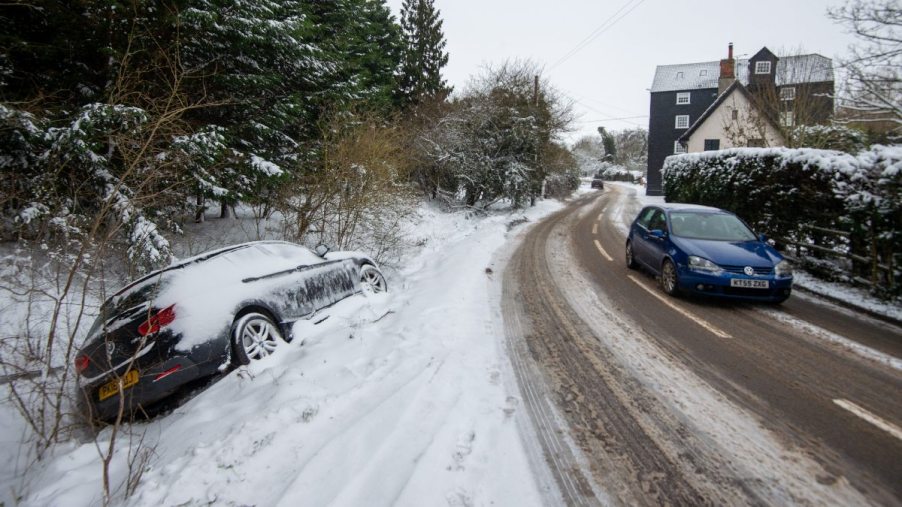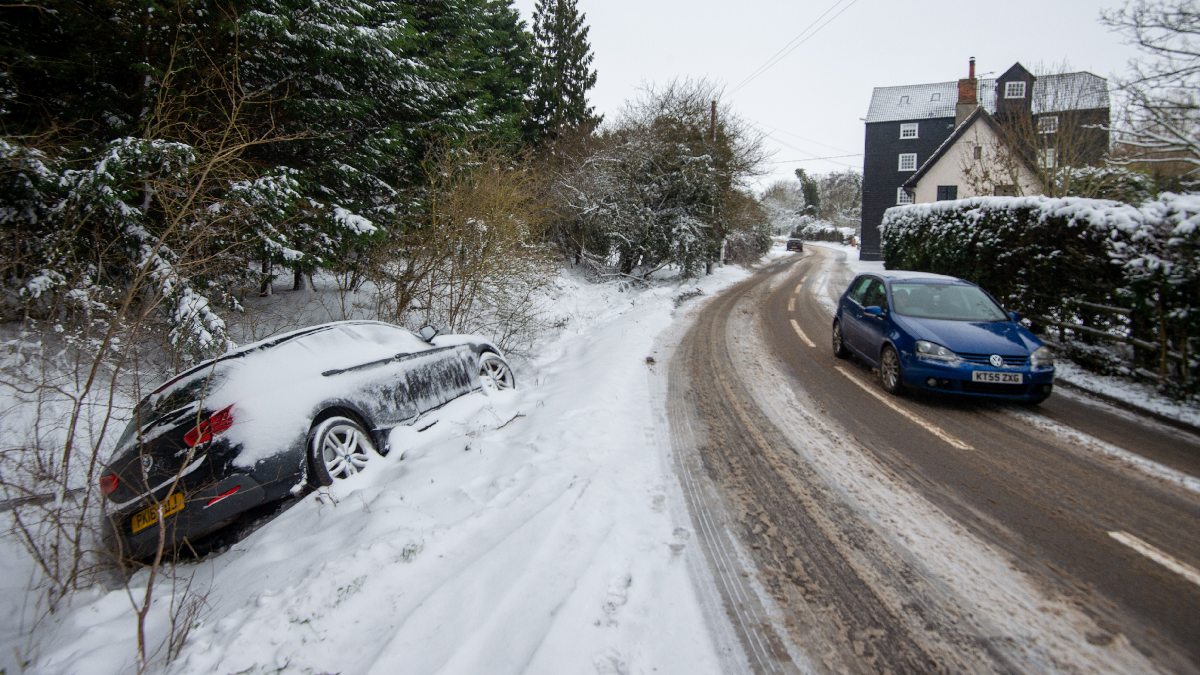
How Getting Stuck in the Snow Can Ruin Your Car
Getting stuck in the snow is a headache. And shoveling snow before your morning commute is not a great way to start the day. But even if work is canceled and schools are closed, it’s a good idea to dig your vehicle out as soon as possible. Many people don’t know that leaving their cars buried in the snow can damage them.
How does leaving your car stuck in the snow damage it?

It might seem harmless, but winter snow can cause considerable damage to vehicle components such as the battery and engine. According to Vehicle HQ, the weight of heavy snow on a car places stress on it. And if you only partially dig out your car and then start it to try to free it, that excess stress and the force of the spinning wheels can cause severe damage to the transmission, powertrain, and other components.
In addition, snow can damage brake rotors and pads because the moisture could rust them. Furthermore, the longer your car sits buried in the snow, the greater the risk the battery will fail. And if you think digging out in the morning is unpleasant, try finding someone who’ll give you a jump-start on a cold, snowy day.
Also, snow build-up can cause serious damage if it builds up near the exhaust pipe. So, it’s crucial to clear any snow from that area before starting your car. Additionally, snow mixed with chemicals, salt, and debris from the road can damage your vehicle’s finish and paint.
During the day, temperatures grow warmer, and some snow may melt. As night falls and the temperature drops again, the snow refreezes, gets heavier, and becomes more difficult to dislodge. Even if you’re housebound for several days, try to dig your car out on day one.
How to dislodge your vehicle from a snow drift safely
If your car gets stuck in the snow, you should know how to free it safely. The Drive notes you should start by clearing all the snow away from your tires, giving you room to maneuver when you eventually get inside the vehicle and start it. Then remove the snow from around the rest of the car, starting with the roof, followed by the windows, hood, and trunk. If you do the roof last, you’ll have to clear falling snow twice.
Next, get in your car, start it, and shift it into drive (or first gear if you have a manual transmission). Drive back and forth until you’ve cleared any remaining snow and ice around your tires, and you can maneuver safely out of the drift.
If your car is still stuck in the snow, add traction using salt, kitty litter, or sand. You can also use snow chains if you have them. And if those options don’t work, recruiting a neighbor or two to help you push your vehicle is the next best option.
To avoid making matters worse, avoid flooring the gas pedal, which will likely get you stuck even deeper in the snow. Also, ensure you’ve cleared a path from your car to the road by moving snow and breaking ice. And when you’re clear, drive slowly. You’ll want to minimize the risk of plunging into another snow bank, so be careful when moving again.
How to avoid getting stuck in a snow drift in the first place
The best way to avoid snow damage from a snow drift is to avoid getting snowed in. It’s easy to get stuck if your tires are worn. So start by checking your tires’ tread depth using a penny. Then, if your tire tread doesn’t cover President Lincoln’s head, replace your tires as soon as possible.
You can also avoid the pain of de-icing your windshield by placing a blanket over it the night before an expected snowfall. Then all you need to do is lift the blanket. It’s much easier than hacking away at every bit of ice inch by inch.
Also, park your car on a level surface. The greater the depression in the street, the more snow will cover your car. If you can’t park your vehicle in a garage, at least keep it on level ground.
And, of course, keep an eye on the weather forecast, and salt the area where you usually park. De-icing the ground beneath your vehicle makes clearing your car all the more difficult.


